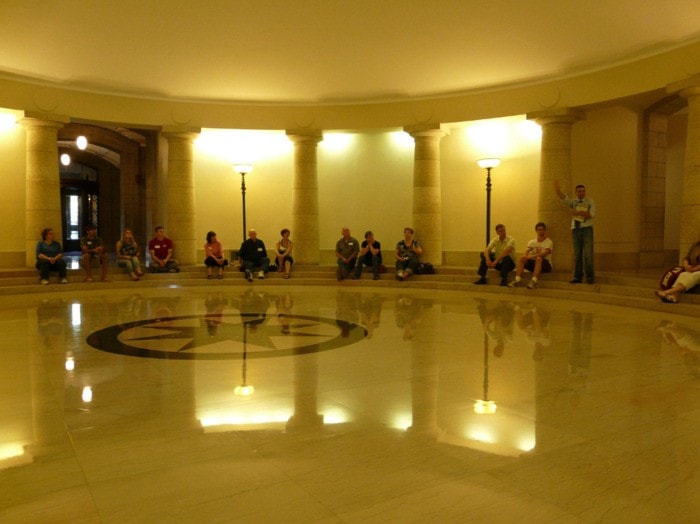WINNIPEG — Frank Albo, a real-life Robert Langdon, is warming to his topic.
“This building,” he says, “is telling a story. It’s telling a story through the language that temples spoke.”
The building is the Manitoba legislature. The language is that of symbols, one that would be decipherable by any Freemason. Or by someone who’s taken a keen interest in symbology, as Albo has.
“I was looking for something to write about for my undergraduate degree,” he says.
Driving by the legislature he noticed two sphinxes on its roof. That got him started. He talked the provincial government into giving him a grant to research the building.
It took two years. (“I figure I made about 35¢ an hour.”).
But he got a book out of it, The Hermetic Code, and created a tour of the legislature that can run from 90 minutes to two hours, depending on how excited he and his tour group get.
Everyone from high-ranking Freemasons to Queen Elizabeth’s ladies in waiting to fans of Dan Brown’s The Da Vinci Code (whose hero is symbologist Robert Langdon) has taken it.
Lots of public buildings have bits intended to put visitors in mind of something: lions in front of court houses, for example, underline the nobility and majesty of the justice dispensed within.
But, contends Albo, nearly everything in the Manitoba Legislature is loaded with meaning. One set of architectural features indicates you’re about to enter a temple, another are a manifestation of the Fibonacci sequence (which also plays a role in The Da Vinci Code).
When the legislature was built, between 1913 and 1920, these ciphers would have been readily understood, since virtually everyone associated with its construction, beginning with its architect, Frank Worthington Simon, was a Freemason.
As was every Manitoba premier from 1872 to 1966. (Ed Schreyer, who led the New Democrats to power, was the first who wasn’t.)
Some of the symbolism is hidden. The rooftop sphinxes, for example, are incised with the cartouche of Tuthmosis III, the pharaoh thought to have created the first secret societies. You can only see the cartouche if you climb on the roof.
Most, though, is in plain view. The legislature’s crowning glory, the Golden Boy, is Hermes, the Greek god of commerce, transportation, communication and crossroads — all the things that were to be central to Winnipeg’s future back in the 1900s, when it was believed that the city would become the Chicago of the north, home to 4.5 million people.
(Metropolitan Winnipeg’s current population is 675,000; Manitoba’s is 1.1 million.) Perhaps anticipating events, the sculptors of Golden Boy created him “not that well endowed,” says Albo.
For the Freemasons it was built for, the legislature was meant to constantly remind them of the noble aims of their society and the lofty goals of the province.
“A temple to morality,” Albo calls it. “A building that you walk through and it makes you wiser or more sagacious.”
At least it does if you can speak its language, or have the right interpreter.
Access
For more information on the Hermetic Code Tour visit the Heartland International Travel & Tours website at www.heartlandtravel.ca.
For information on Winnipeg visit the Tourism Winnipeg website at www.tourismwinnipeg.com.
